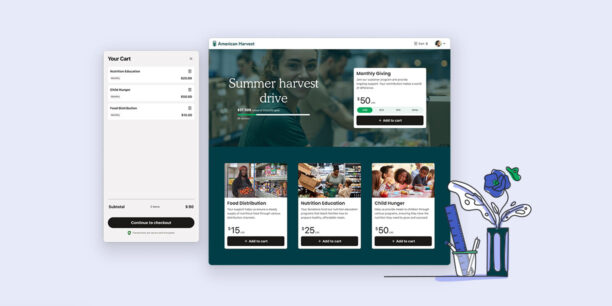Why Nonprofit Board Members Make Great Fundraisers

Request a Demo
Learn how top nonprofits use Classy to power their fundraising.
Peer-to-peer fundraising is effective because it allows your supporters to contribute far more to your organization than they could individually donate. This is a great option, not only for younger, lower-income supporters but also for established professionals with large networks. People like your board members.
While every organization has a unique relationship with its board, fundraising is a task you must collaborate on and share responsibility for. While many nonprofit board members contribute by soliciting major gifts or making personal donations, asking them to create a personal fundraising page can strengthen their commitment to the cause, introduce potential big donors to your organization, and set a powerful example for future fundraisers.
Poised for Success
Many board members are in a great position to create a personal fundraising campaign, partially because they already know and love your cause. Board members know what you’ve accomplished and may have even lent a hand themselves. They are well positioned to speak about your cause and organization.
To help make it more personal, ask board members to tell the story of their involvement in their own words. A personal fundraising page is a good place for them to share their passion about the cause.
Another reason board members can be such great peer-to-peer fundraisers is because they are often established professionals with a wide pool of friends, colleagues, and business acquaintances. The power of peer-to-peer fundraising is that a single donor can create a page and recruit 10 new people to support the organization. Board members generally have experience working with a variety of people in the community and they can call on their social and business networks to give to their page.
Finally, you should consider asking board members to fundraise because they are leaders, both in your organization and in your community. It’s always a good idea to offer some examples and instruction to get your supporters started in peer-to-peer fundraising, and because board members have viable social networks and already know about your cause, they are ideal candidates to lead the charge.
Start By Asking One or Two
Even though raising and managing funds are an important part of a nonprofit board’s duties, you may still be hesitant to approach yours about peer-to-peer fundraising. It can be nerve-racking to bring up a new idea to people with power over your workplace, so proposing the idea to one or two of your closest or most involved board members is a good way to start.
To decide which board members might be most willing to give peer-to-peer fundraising a try, look for these qualities:
• A Personal Connection to The Cause – Fundraising pages are more compelling and meaningful when the fundraiser tells their story and why the cause speaks to them.
• Tech Savvy, Social Media Users – Board members who are always online or who have a big following on social media will be able to use their online presence to promote their page.
• Hands-On and Humble – Another clue that a certain board member might be willing to try peer-to-peer is that they are eager to be involved in day-to-day operations with your organization. Look for someone who embraces the axioms “lead by example” and “no task is beneath me.”
Once you have identified one or two board members to approach about creating a fundraising page, reach out to them personally to explain your idea and why you think they would be successful.
How to Ask
To help your board members see the value in peer-to-peer fundraisers, be prepared to show them some examples, either from your own organization or other nonprofits. If you need some inspiration, check out the Classy customers page for some well-known nonprofits. Explain that the board member’s social and professional networks are exactly the kind of audiences that respond to a personal fundraising campaign.
Emphasize that fundraising pages can be set up and personalized in just a few minutes. You can even offer to walk them through your fundraising software to make sure they have a smooth experience.
Finally, don’t forget to emphasize the personal element in peer-to-peer fundraising. It is not uncommon for nonprofit board members to have a personal reason for supporting an organization, and this is their chance to tell that story.
A peer-to-peer fundraising campaign can also incorporate an interest or milestone in the fundraiser’s life. If your board member is a runner, for example, they can fundraise for a race. If their 60th birthday is coming up, they could ask friends and family to donate to their page.
Above all, present peer-to-peer fundraising as an opportunity to personally create impact and support your work.
It can be intimidating to ask your board for help, but they are there to support and manage the organization. The fundraising potential of your board and their social networks is an opportunity you can’t afford to waste.
Even if you start by asking only one board member, you have the potential to spread the word about your cause, raise significant funds, and strengthen the member’s bond with your nonprofit.
Read Next: 8 Surefire Ways to Run a Successful CampaignRun Your Best Campaign Ever: Download the Successful Fundraiser Guide
Subscribe to the Classy Blog
Get the latest fundraising tips, trends, and ideas in your inbox.
Thank you for subscribing
You signed up for emails from Classy
Request a Demo
Learn how top nonprofits use Classy to power their fundraising.
 Explore Classy.org
Explore Classy.org 


